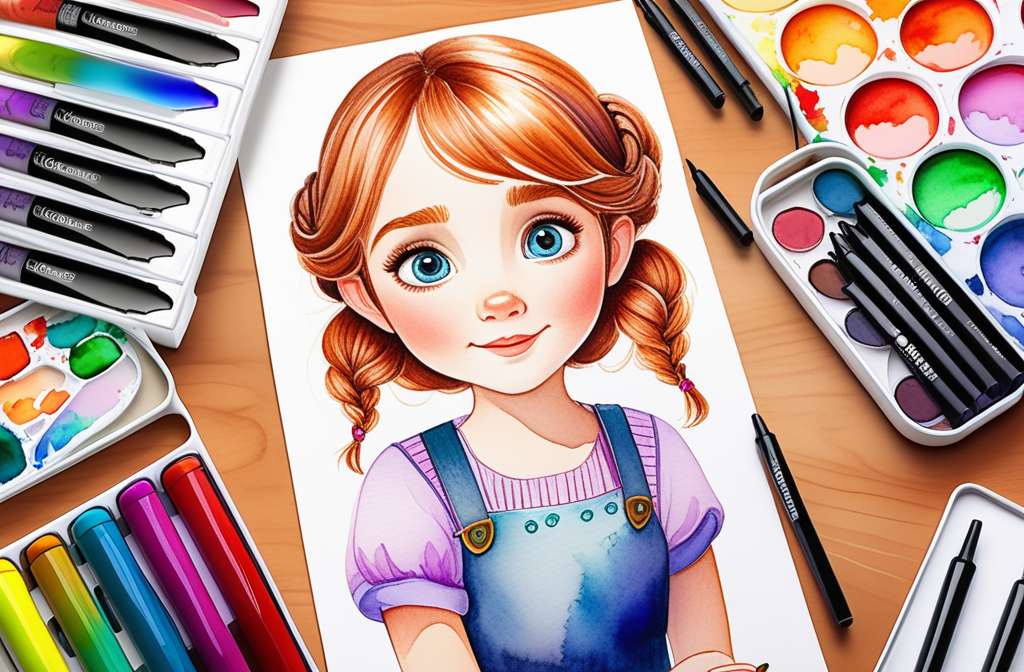Blogs coloring page
Coloring Pages for Kids: An Educational Tool for Learning Languages
Coloring pages for kids have long been a favorite activity among children, but their educational potential often goes unrecognized. Far from being just a pastime, coloring pages can serve as powerful tools for teaching languages, scientific concepts, historical facts, and more. In this article, we delve into how coloring can transform the learning experience, making it fun, interactive, and highly effective for children.
In the quest to make learning both effective and enjoyable, educators and parents continuously seek innovative methods. Coloring pages, often seen merely as recreational activities, have emerged as an unexpected yet potent educational tool. These pages not only engage children’s creativity but also serve as a medium for teaching various school subjects and languages in an interactive manner. This article explores the multifaceted educational benefits of coloring pages and provides examples of how they can be used to enhance learning.
The Educational Benefits of Coloring Pages for kids
Coloring pages are more than just a source of entertainment. They help develop fine motor skills, improve focus, and stimulate creativity. When designed with educational purposes in mind, they also introduce new concepts, enhance vocabulary, and reinforce learning in a visually appealing way. Let’s explore these benefits in detail.
Language Learning Through Coloring Pages
Learning a new language can be challenging for children, but coloring pages can make this process enjoyable and less daunting. For instance, coloring pages that feature common vocabulary words in the target language, along with images, help children associate words with objects. This method reinforces memory and aids in the retention of new vocabulary.
Consider a coloring page that showcases animals with their names written in both the native language and the target language. As children color the animals, they repeatedly see the words, aiding in memorization and pronunciation practice. This method can be extended to various categories such as fruits, vegetables, household items, and more.
Teaching Grammar with Coloring Pages
Grammar concepts can be tricky to grasp, but visual aids in the form of coloring pages can simplify these notions. For example, pages designed to teach verb conjugations can depict different actions with corresponding verbs in various tenses. Children can color the images while practicing the conjugations, making grammar lessons more engaging and less abstract.

Scientific Concepts Illustrated Through Coloring
Science subjects often involve complex concepts that can be difficult for young learners to visualize and understand. Coloring pages can demystify these concepts by breaking them down into simpler, visual elements. For example, a coloring page depicting the water cycle can show each stage—evaporation, condensation, precipitation, and collection—with corresponding labels. As children color each stage, they internalize the process in a fun and interactive way.
Similarly, anatomy coloring pages can help students learn about different parts of the body. Pages that illustrate the human heart, for instance, can label each part (atria, ventricles, arteries) and explain their functions. This hands-on approach enhances comprehension and retention of scientific knowledge.
Historical Facts Brought to Life
History lessons can be enriched with coloring pages that depict significant events, historical figures, and cultural milestones. Coloring these pages allows children to engage with history actively, fostering a deeper understanding of the past.
For instance, a coloring page showing the signing of the Declaration of Independence can include important figures like George Washington and Thomas Jefferson. As children color, they can learn about the roles these individuals played in history, making the lesson more memorable.
Mathematical Concepts Through Coloring
Mathematics, often perceived as a dry subject, can be transformed into an enjoyable activity with the help of coloring pages. Pages that incorporate mathematical problems or concepts encourage children to solve problems to complete the picture. For example, coloring pages with simple addition or subtraction problems require children to solve equations to find the right colors for different sections of the image.
A colorful adventure with Turtles Themed Coloring Activities Vol. 5
Dive into the vibrant and action-packed world of the Mutant Ninja Turtles with the latest volume in our beloved coloring series. “Mutant Ninja Turtles Artwork for Coloring Vol 6” presents fans of all ages with a unique opportunity to bring their favorite heroes in a half shell to life through the magic of coloring.
How Coloring Pages Make Learning Interactive
Coloring pages foster a hands-on approach to learning that traditional methods often lack. This interactive aspect is crucial for young learners who benefit from engaging multiple senses during the learning process. By combining visual elements with physical activity, coloring pages cater to different learning styles, making education more inclusive and effective.
Developing Fine Motor Skills and Focus
The act of coloring helps children develop fine motor skills by requiring them to hold and maneuver crayons or pencils. This activity strengthens hand-eye coordination and improves focus and concentration. When children are engaged in coloring educational pages, they are not only learning new concepts but also honing their motor skills in a meaningful way.
Examples of Educational Coloring Pages
- Vocabulary Building Pages: These pages feature images of common objects, animals, or foods with their names written in the target language. As children color, they learn new words and improve their language skills.
- Grammar Practice Pages: Pages that depict actions with verbs in different tenses help children practice conjugations in a fun and visual manner.
- Science Concept Pages: Illustrations of the water cycle, parts of the human body, or animal habitats make complex scientific concepts accessible to young learners.
- History Learning Pages: Coloring pages that portray historical events or figures allow children to engage with history in a hands-on way, fostering a deeper understanding of the past.
- Mathematics Problem Pages: Pages with math problems incorporated into the coloring activity encourage children to solve equations to complete the picture, making math practice enjoyable.
Integrating Coloring Pages into the Classroom
Teachers can integrate coloring pages Coloring pages for kids into their lesson plans to reinforce concepts taught in class. These pages can be used as supplementary materials to review topics, provide additional practice, or introduce new subjects. By incorporating coloring pages into the curriculum, teachers can create a more dynamic and engaging learning environment.

Tips for Creating Educational Coloring Pages
When designing educational coloring pages, it is essential to ensure that they are age-appropriate and aligned with the learning objectives. Here are some tips for creating effective educational coloring pages:
- Use Clear and Simple Illustrations: Ensure that the images are easy to understand and color.
- Include Labels and Explanations: Provide labels and brief explanations to enhance the educational value.
- Incorporate Interactive Elements: Add activities such as matching, tracing, or solving problems to make the pages more engaging.
- Align with Curriculum Standards: Ensure that the content aligns with educational standards and learning goals.
Conclusion
Coloring pages for kids are not just a source of entertainment but a valuable educational tool. They offer a creative and interactive way to teach languages, grammar, science, history, and mathematics. By integrating coloring pages into the learning process, educators and parents can make education more enjoyable and effective for children. Whether used in the classroom or at home, educational coloring pages are a versatile resource that can enhance the learning experience and foster a lifelong love of learning.
FAQs
What are the benefits of using coloring pages for educational purposes? Coloring pages can enhance fine motor skills, improve focus, and make learning fun and interactive. They also help reinforce new concepts and vocabulary in an engaging way.
How can coloring pages help in language learning? Coloring pages featuring vocabulary words and images help children associate words with objects, aiding in memory retention and pronunciation practice.
Can coloring pages be used to teach science concepts? Yes, coloring pages can illustrate complex scientific concepts in a simplified and visual manner, making them easier for children to understand and remember.
What types of educational content can be included in coloring pages? Educational coloring pages can include vocabulary words, grammar concepts, scientific processes, historical events, and mathematical problems.
How can teachers integrate coloring pages into their lesson plans? Teachers can use coloring pages as supplementary materials to review topics, provide additional practice, or introduce new subjects, making lessons more dynamic and engaging.
Are there any specific tips for creating effective educational coloring pages? Yes, use clear and simple illustrations, include labels and explanations, incorporate interactive elements, and ensure the content aligns with curriculum standards.


